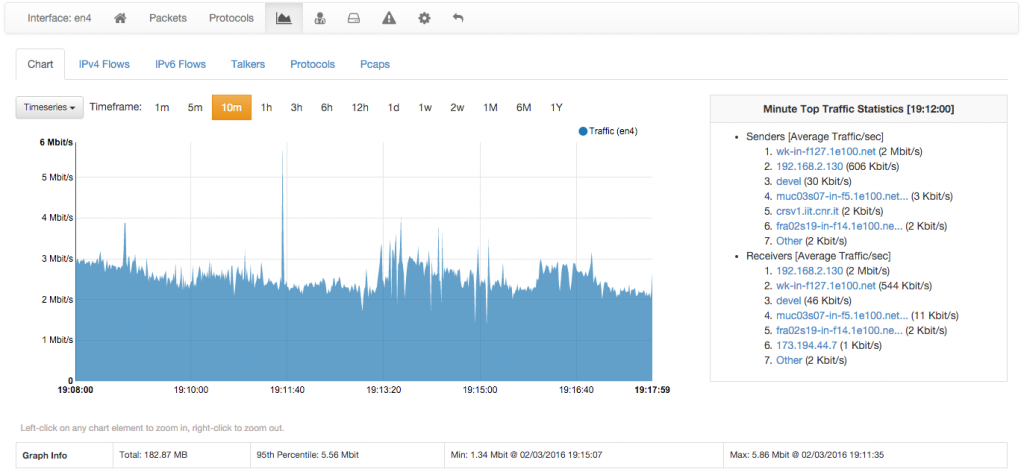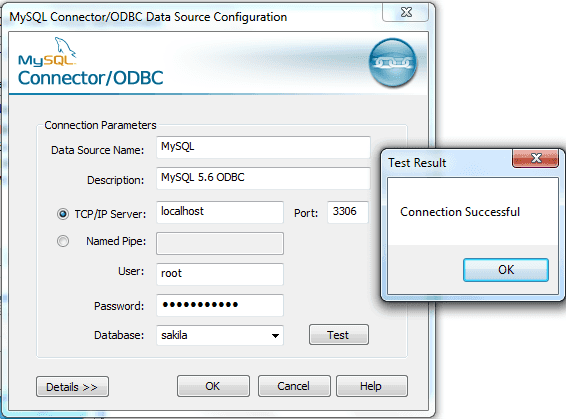

- CONFIGURE MYSQL FOR NTOPNG HOW TO
- CONFIGURE MYSQL FOR NTOPNG INSTALL
- CONFIGURE MYSQL FOR NTOPNG UPDATE
- CONFIGURE MYSQL FOR NTOPNG SOFTWARE
- CONFIGURE MYSQL FOR NTOPNG PASSWORD
CONFIGURE MYSQL FOR NTOPNG HOW TO
Here’s how to do it: Step 1: Start MySQL Shellįirst, start the MySQL shell by running the following command as sudo: $ sudo mysql You can configure root to use MySQL Shell by changing its authentication method from the default “auth_socket” to “mysql_native_password”. However, this user is not allowed to connect to MySQL Shell with the same password.
CONFIGURE MYSQL FOR NTOPNG PASSWORD
When running the security script, you specified a password for root. Enter y and all your security changes will be applied. In order for all of your changes configured above to take effect, the system must reload the permissions tables. The third question asks if you want to remove the default MySQL database named “test” from your system and also delete access to it. We, therefore, recommend that you enter y. This should normally be your choice, because for a secure system, root should only be allowed to connect from localhost. The second question will ask you if you want to disallow root login from a remote system. The first question will ask you if you want to remove the anonymous test users. The system will now ask you a series of questions, one at a time, and you can set the security of your system depending on your answers to these questions. The system will then display the strength of the password you provided and also ask you if you want to continue with the password. Type the password and retype it at the following prompts. The system will then ask you for the new password of root. Type Y to start the Validate Password plugin and you will get the following prompt:Įnter the number of your choice for the password strength and press Enter. This allows you to set a secure password for root, depending on the strength of the password you want to choose. When you run this command, the first thing you will be prompted to do is set up the Validate Password plugin. Run the following command as sudo to start the security script: Advertisement $ sudo mysql_secure_installation

These include removing test users, test databases, and allowing remote login by a root user.
CONFIGURE MYSQL FOR NTOPNG INSTALL
Whenever you install a new copy of MySQL, there are some default settings that you should change to increase the security of your MySQL installation. You can verify your MySQL installation and also check the version number by running the following command in your terminal: $ mysql -version Step 4: Make security configurations by running the provided security script Step 3: Verify the installation (optional) However, the process may take some time depending on your internet speed. Type Y and then press Enter MySQL will then be installed on your system. The system may ask you for the password for sudo and also offer you a Y/n option to continue the installation. Please note that only an authorized user on Ubuntu can add, remove and configure software. Please run the following command as sudo to install MySQL from APT repositories.
CONFIGURE MYSQL FOR NTOPNG UPDATE
Run the following command as sudo to update your local repository index: $ sudo apt-get update Step 2: Install MySQL server with apt
CONFIGURE MYSQL FOR NTOPNG SOFTWARE
To install the latest available version of a software from the Internet repositories, your local repository index must match it. You can open the Ubuntu command line, the terminal, either from the application launcher search bar or by pressing Ctrl+Alt+T. In this section, we describe how to install MySQL from the Ubuntu command line and configure security. We have run the commands and procedures mentioned in this article on an Ubuntu 20.04 LTS system MySQL installation and security configuration Configure the root user to access the MySQL shell.Install the latest version of MySQL available in the apt package repository.

In this article we describe step by step how to proceed: MySQL is part of the very popular LAMP stack: Linux, Apache, MySQL and Python/PHP/Perl. Facebook, YouTube and Twitter all use MySQL as their RDBMS. MYSQL is usually the first choice for online publishing and web-based applications. This RDBMS is supported by Oracle and runs on almost all platforms such as Linux, UNIX and MS Windows. MySQL, which stands for My (co-founder Michael Widenius’ daughter name) Structured Query Language, is an open source relational database management system.


 0 kommentar(er)
0 kommentar(er)
